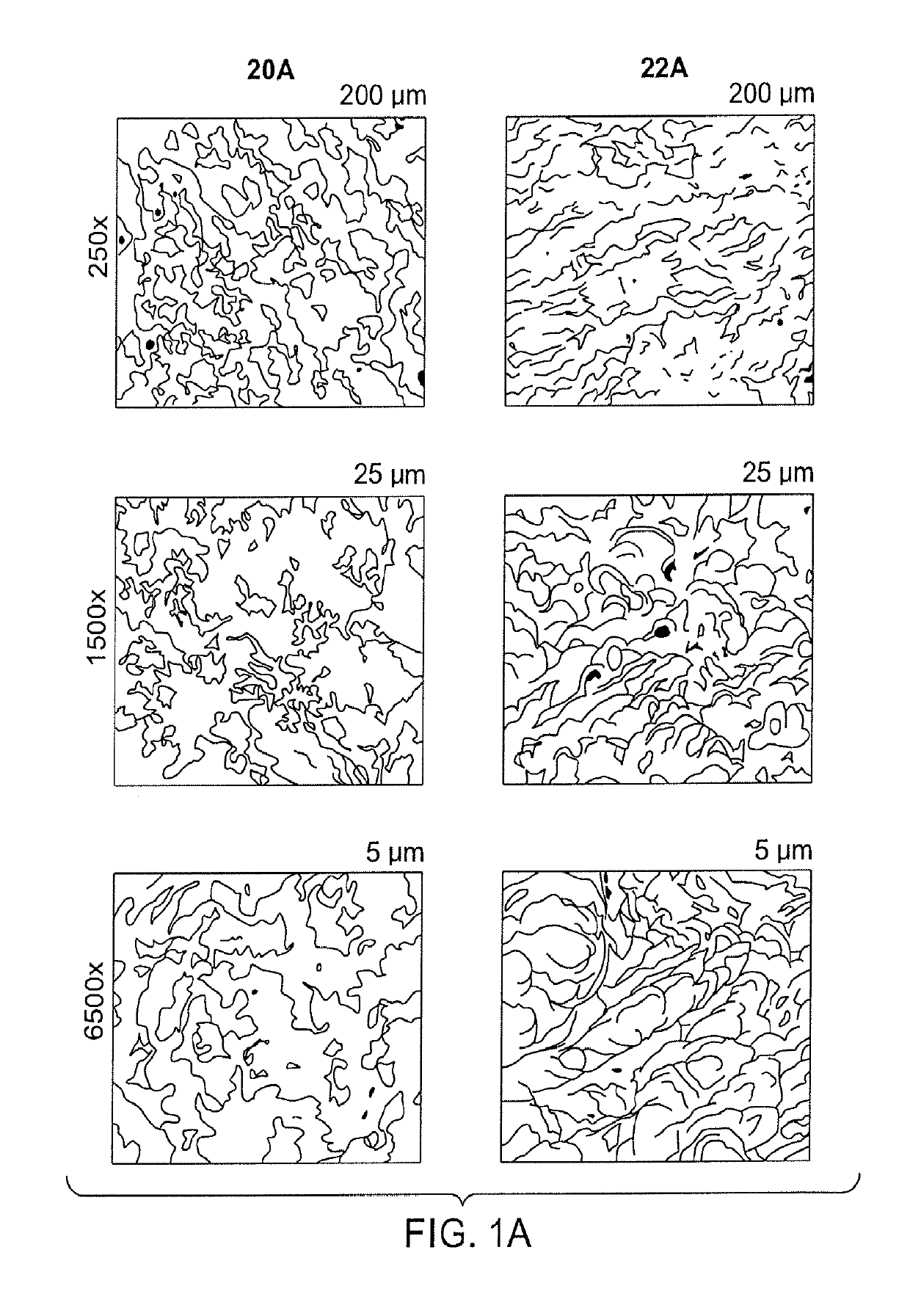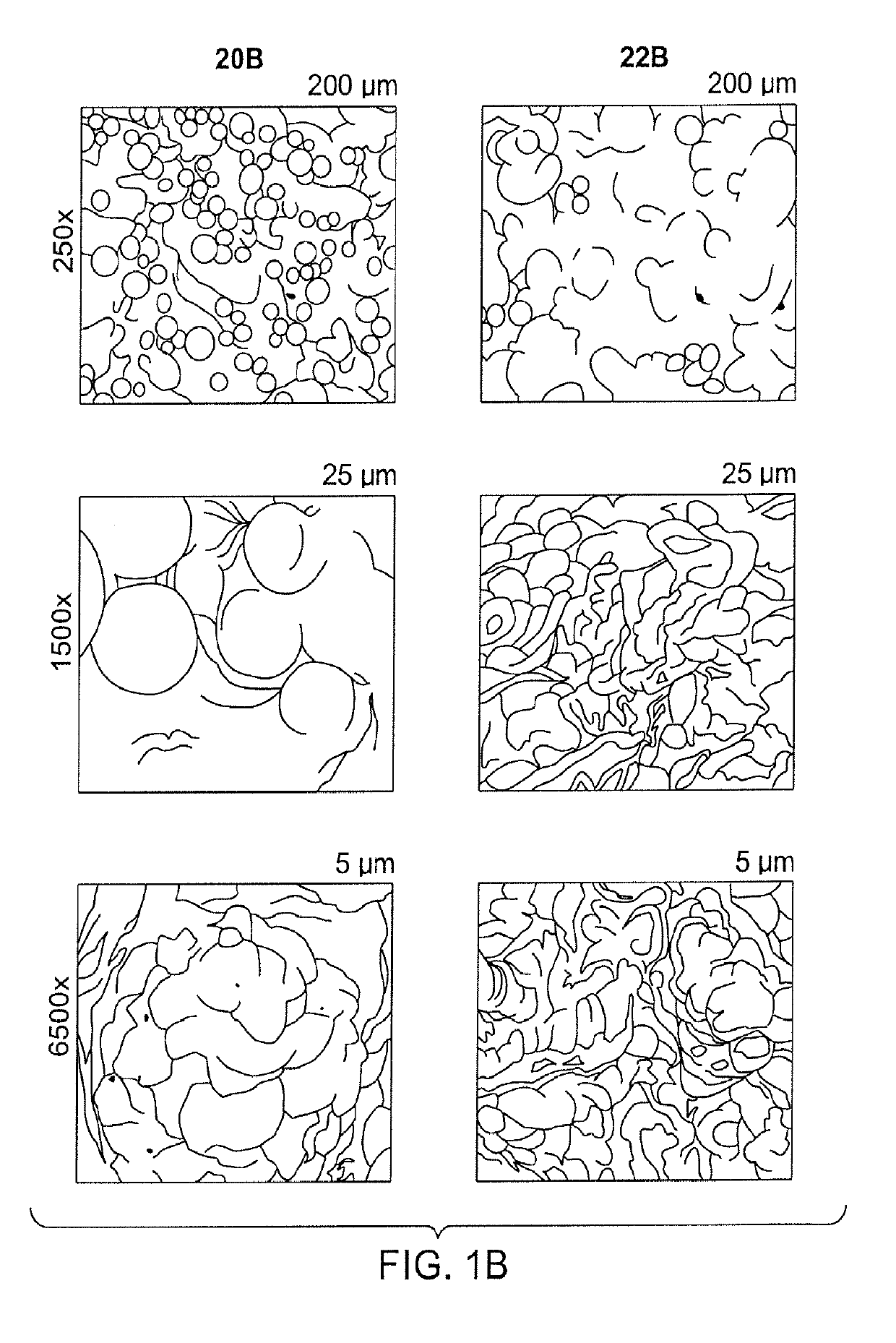Titanium implant surfaces free from alpha case and with enhanced osteoinduction
a titanium implant and alpha case technology, applied in the field of titanium implants, can solve the problems of inability to integrate with bone, inability to achieve the integration of the implant with adjacent bone, and certain polymeric materials such as polyether ether ketone (peek) commonly used in orthopedic implants, etc., to enhance the expression of alkaline phosphatase, enhance osteogenesis, and enhance osteogenesis
- Summary
- Abstract
- Description
- Claims
- Application Information
AI Technical Summary
Benefits of technology
Problems solved by technology
Method used
Image
Examples
example 1
SEM Images of Additively Manufactured Titanium Surfaces
[0112]Titanium discs were additively manufactured using either laser melting / sintering (e.g., direct metal laser sintering (DMLS)) or electron beam melting (EBM). These discs were then subject to either stress-relief or hot isostatic pressing, and were subject to mechanical and chemical erosion as summarized in Table 1. Scanning electron microscope (SEM) images of the discs were obtained, and are shown in FIGS. 1A, 1B, 1C, 1D, and 1E. (A SEM is an electron microscope in which the surface of a specimen is scanned by a beam of electrons that are reflected to form an image.)
[0113]Surface 20A was a DMLS-produced surface that was subject to stress-relief, but no erosion. Surface 20B was an EBM-produced surface that was subject to hot isostatic pressing, but no erosion. Surface 20C was a DMLS-produced surface that was subject to hot isostatic pressing, but no erosion. Surface 22A was a DMLS-produced surface that was subject to stress-...
example 2
Alkaline Phosphatase, Osterix, and Osteocalcin as Recognized Markers of Osteoblast Development and Osteoinduction
[0116]Osteogenic differentiation is a continuous process characterized by the rise and fall of several proteins. The proteins analyzed herein characterize early (ALP), mid (OSX) and late (OCN) osteoblast markers. The process of osteoblast differentiation begins with mesenchymal stem cells progressing to an intermediate progenitor capable of undergoing either osteogenesis or chondrogenesis and expressing ALP. These intermediate progenitors that commit to an osteogenic lineage, now termed preosteoblasts, increase the expression of ALP. As the preosteoblast progresses to an osteoblast, the expression of OSX is increased and, finally, once the preosteoblast becomes an osteoblast the expression of OCN is increased.
[0117]The osteoblast will eventually mature further and begin transitioning to an osteocyte or undergoing apoptosis. The mature osteoblast state is characterized by ...
example 3
Assessment of Osteogenic Markers on MG63 Cells Grown on Osteoinductive Surfaces
[0118]MG63 cells are a preosteoblast cell line. MG63 cells were seeded onto discs at 10,000 cells / cm2 cultured in EMEM with 10% FBS, 1% Penicillin / Streptomycin, 50 μg / mL Ascorbic Acid, and 10 mM β-Glycerophosphate. After 7 days of culture, the cells were lysed with a Pierce Mammalian Protein Extraction Reagent with protease inhibitors, and lysates were assessed for the expression of alkaline phosphatase (ALP), osteopontin (OPN), and RunX2. Alkaline phosphatase (ALP), an early osteoblast differentiation marker, was measured through an enzymatic assay relying on the conversion of p-Nitrophenyl phosphate to p-Nitrophenol in the presence of ALP and then measuring the absorbance of p-Nitrophenol. ALP was normalized to the amount of DNA present in the samples. DNA was measured with a standard PicoGreen assay. Osteopontin (OPN), a protein expressed by osteoblasts throughout differentiation, was measured through ...
PUM
| Property | Measurement | Unit |
|---|---|---|
| temperature | aaaaa | aaaaa |
| pressure | aaaaa | aaaaa |
| melting point | aaaaa | aaaaa |
Abstract
Description
Claims
Application Information
 Login to View More
Login to View More - R&D
- Intellectual Property
- Life Sciences
- Materials
- Tech Scout
- Unparalleled Data Quality
- Higher Quality Content
- 60% Fewer Hallucinations
Browse by: Latest US Patents, China's latest patents, Technical Efficacy Thesaurus, Application Domain, Technology Topic, Popular Technical Reports.
© 2025 PatSnap. All rights reserved.Legal|Privacy policy|Modern Slavery Act Transparency Statement|Sitemap|About US| Contact US: help@patsnap.com



